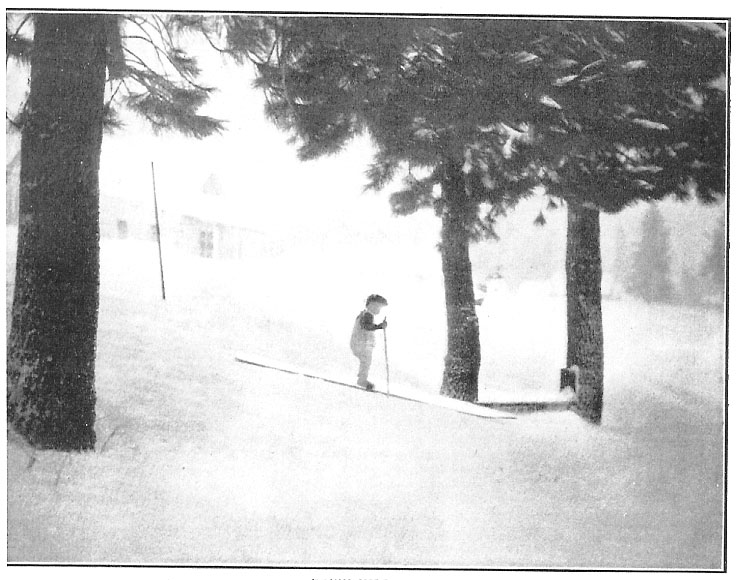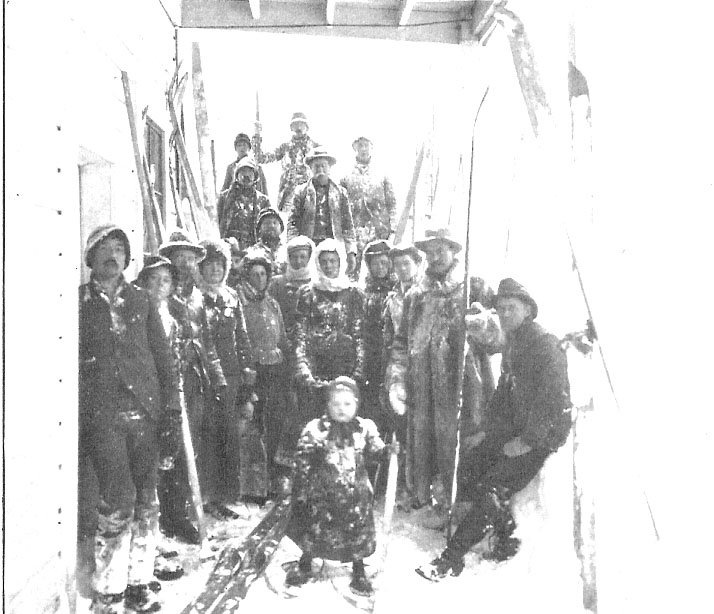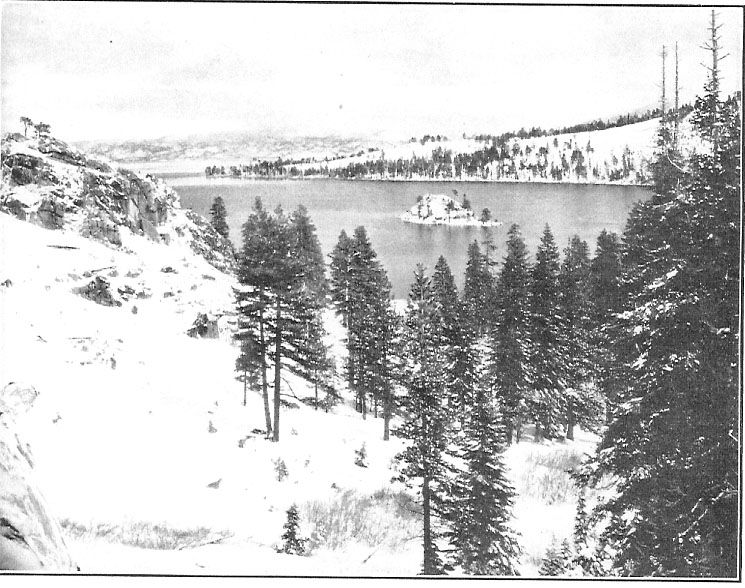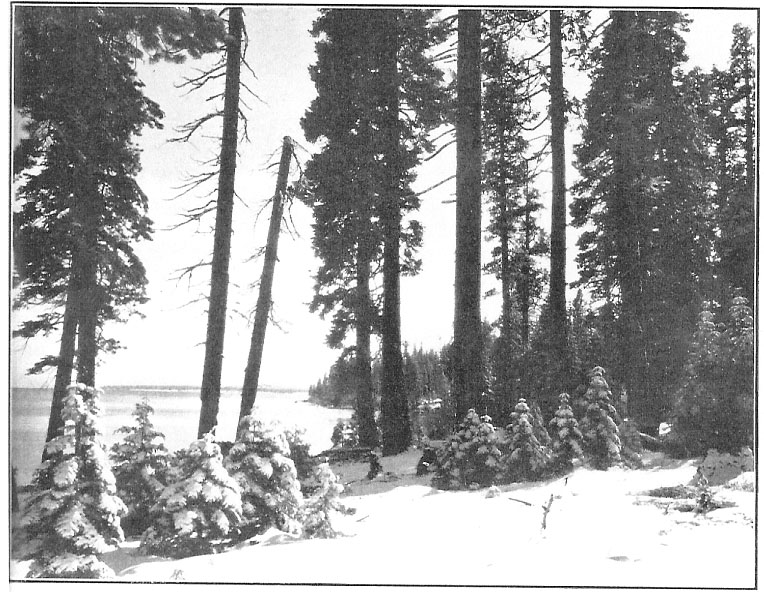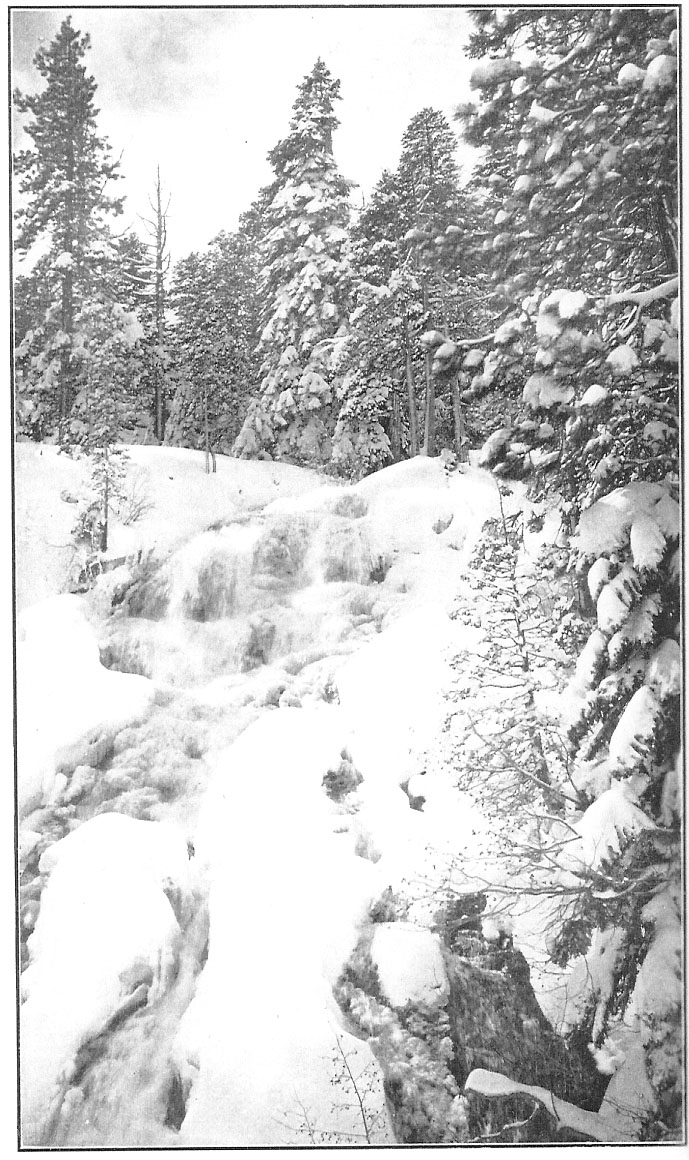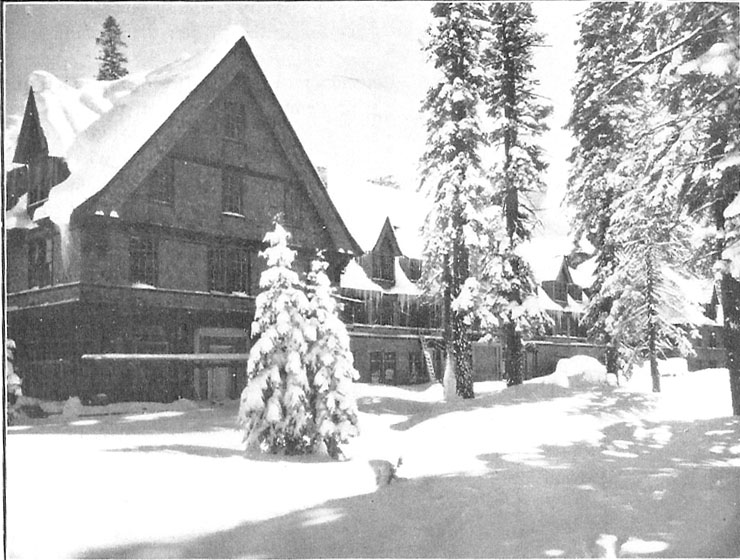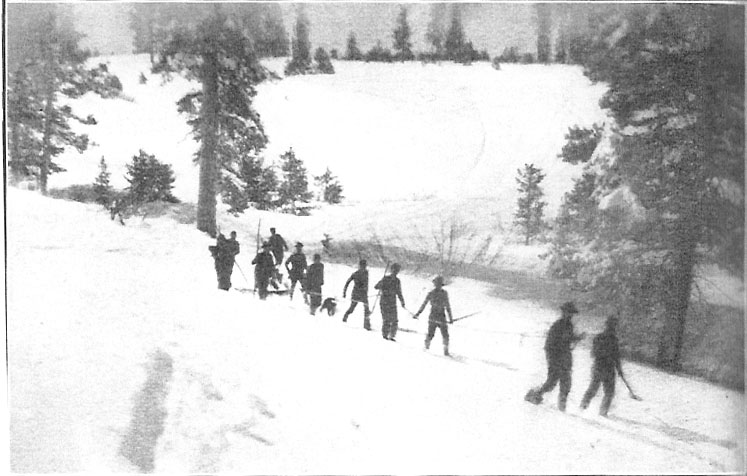We're committed to helping you
Camera Craft
A photographic monthly
Vol. IV SAN FRANCISCO, CALIFORNIA, APRIL, 1902 No. 6.
DOWN HILL
THROUGH THE HIGH SIERRA ON SKIES
BY ARTHUR C. PILLSBURY
ILLUSTRATED BY THE WRITER
When the porter scratched on my curtain and whispered, “Be in Truckee in twenty minutes,” it took me a full tenth of that time to realize just why I was to get off at Truckee. I touched my window curtain and it went up with a stir that startled me even as much as the sight that met my sleepy gaze. As far as the eye could reach through the interstices of the great snow sheds a blinding stretch of snow-covered hills flitted by. The differences from the day before, from balmy breezes to the land of snow, my sound sleep and sudden wakening combined to impress me with the fact that I was still in the land of the living, and that it was “an idle dream.” But the whirling clouds of steam, issuing out in the frosty air and clinging to the sides of the sheds, the slant of sunlight through the roof of the covered track began to have its effect, and in another minute I was wide awake and full of the anticipation of the native Californian when he approaches snow-covered fields and hills.
At Truckee I piled off the sleeper, my shoulder encumbered with the varied paraphernalia of the photographer, and began to get accustomed to the gaze of the sun as it peeped over the hills. The engine puffed and blowed, leaving great balls of stead to circle about in the distance. By the side of the station stood the sleigh, which was to carry me to Tallac, the four horses steaming and pawing
---stood the whole party on the store front and made a picture of them.
the snow in their impatience to be on the move. Nothing could be soon of the narrow gauge track over which the pleasure-seekers throng to Tahoe in the summer. Four feet of snow hid it, and all of the rough land marks familiar to the summer visitors from view.
The drive to Tahoe was one that I shall always remember. Nothing could have been more invigorating, more bracing, than the clear, cold atmosphere of the Sierras. At the hotel I met a warm welcome not unmixed with surprise. Visitors to Tahoe in the dead of winter are not numerous, and host and attendants talked with me as if with a visitor from an outside world. Still, it was pleasant, and when I told then that I came to make pictures of the snow their interest increased. All the day we were making plans.
EMERALD BAY AND A POINT ON ITS SHORE
EAGLE CASCADE
Toward night it began to snow, and the next morning the big white flakes were still scurrying down I came just in time. It snowed for three days, and when the sun finally peeped through the flying clouds the inhabitants said that it was the heaviest storm in many years.
During the storm I busied myself in the shop of the carpenter making a sled for my camera, and under the supervision of the carpenter himself, made a pair of skies out of tough oak. It was a job that I was proud of, for a lighter pair and a more serviceable one was not to be found in the whole of the Sierras. So the carpenter said. But learning to use them was another matter. Of course, you couldn’t hurt yourself by falling in the snow, but it was not a comfortable experience. The skies I made were about eight feet in length, but before I was finished performer I thought they were a hundred. After I learned the peculiar sliding motion indulged in by the natives I began to get along better. In a short time I was an expert and managed to keep abreast of the youngsters who served as my instructors. On level snow it is an easy operation. You shuffle along at an ordinary walking gait. The stride takes you about three feet, then you slide about a foot. Down hill you simply let go, then greased lightning couldn’t catch you. Up-hill going consists of a series of tacks, much in the manner of a windjammer caught in the teeth of a gale. During the progress of the storm I made many trips from the hotel, on several of which was accompanied by a large body of the inhabitants, who enjoyed the fun fully as much as I did. After the return from one of these trips I stood the whole party of the store front and made a picture of them. The snow was drifting down in a business-like fashion, and occasional gusts whirled the snow over the camera and my subjects. Little did the hardy mountain people mind this however, and although I experienced a peculiar sensation such as you feel when you are not quite sure you are doing the proper thing, I made the exposure and we continued on our way.
When the storm ceased I loaded my camera and outfit in the sled and, accompanied by several of the hotel people, made my first trip for pictures. We attached a long rope to the sled, and catching hold, we strung out across the snow. No one who had not spent a day n the high country when it is full of snow can appreciate the beauty and awe of the trees and hills. Every branch on every tree held its great ball of snow, the ugly fissures and projections were smoothed over by the white carpet, and wherever you went it mattered not. One moment we were on the top of a drift fully a
TAHOE TAVERN IN ITS FIRST WINTER GARB
hundred feet deep; at another we were gliding under tall trees that bent in low obeisance to the majesty of winter. At the falls the scene was different. Stalactites of blue-green, ice-bordered, the tumbling mountain stream and the great white frame around the whole made the water look dark and disagreeable. The falls in winter are not so pleasant as in summer, but there is a mystery about them that is fascinating.
The next day I made the trip to Emerald Bay. I was the first visitor since December, and they welcomed me with open arms. At Glen Alpine we struck snow that covered old Mother Earth eighteen feet deep. On this trip I carried my camera over my shoulders with a pack strap, a trick I learned in Alaska. This left both hands free and there were times when I needed both of them.
I made many pictures on these trips, and on a number of them carried a portable darkroom, so that I was sure that I had what I wanted before leaving the scene. A four hours’ trip through the snow without results is not satisfactory to a fellow’s peace of mind. This portable darkroom plan is one that I am never going to neglect in the future. Fully half the pleasure in Photography is lost when twenty-four hours elapse between the time of exposure an the development. Although accompanied by many difficulties the pleasure of seeing what you have almost immediately amply repays you for it.
RETURNING FROM A TRIP
On all the pictures reproduced I used Seed’s cut film. Goetz lens, dense color screen and a small stop. The tripod I managed to keep above the now by planting the legs on my skies.
Some day the Southern Pacific will run winter excursions to the lake, and the hotels will keep open all winter. Then the city man who wants to get out of the world for a few days will have the pleasures that I have merely hinted at. He will thank me if he follows my advice and takes a camera and a gun along. The hunting, although not varied, is full of sport. Rabbits there are in plenty, with duck and geese to spare.
Camera Craft Magazine,founded in 1900, was an American magazine edited by the Camera Craft Publishing Co. in San Francisco. Its content was about practical photography. Many articles were illustrated with photos. Each issue contained a photographic art print. The International Photographic Association made its announcements on a few pages of each issue.
Through the High Sierra on Skies
by Arthur C. Pillsbury

